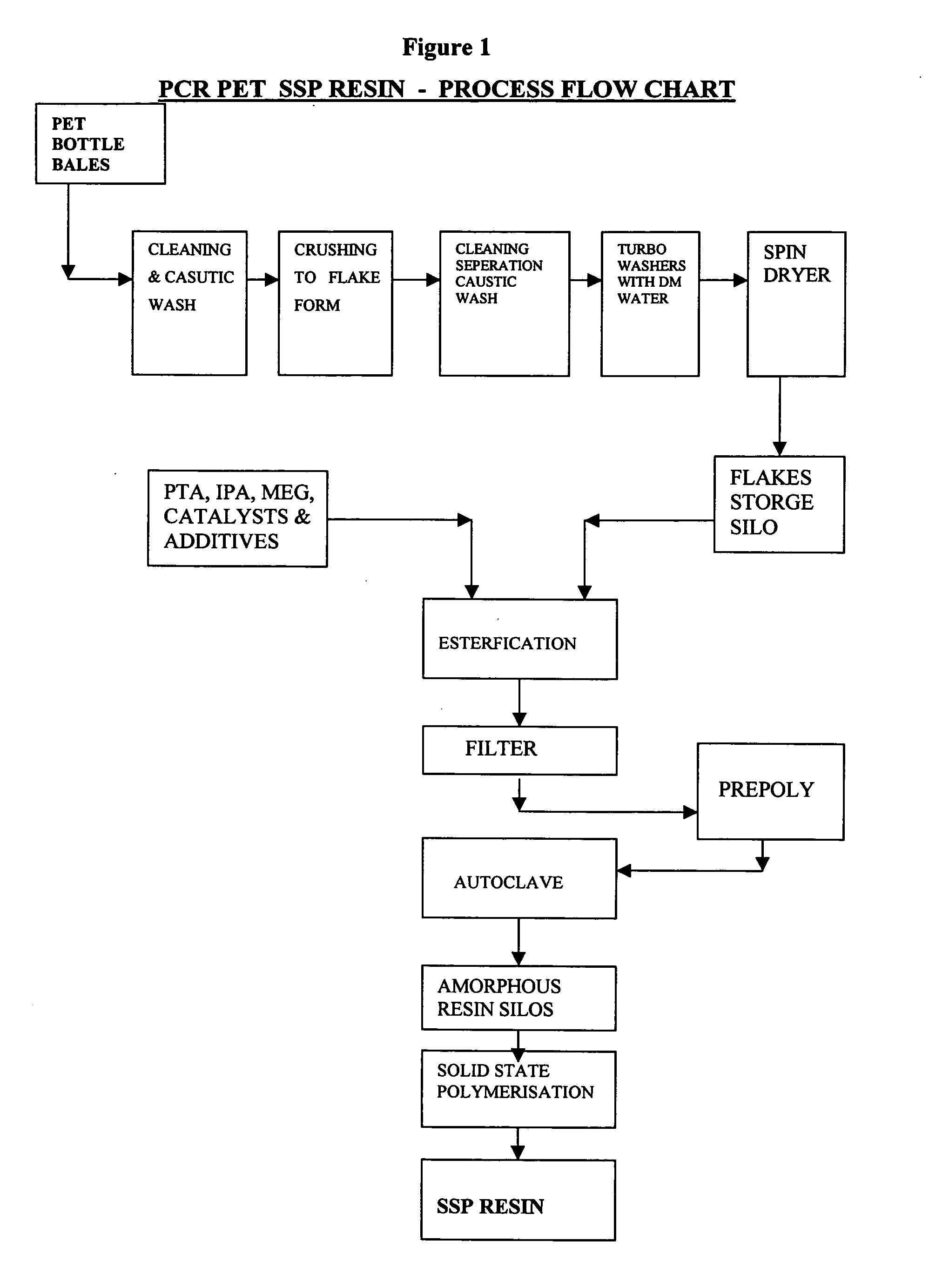Process for controlled polymerization of a mixed polymer
a polymerization and polymerization technology, applied in the direction of reagents, products, educts, etc., can solve the problems of high molecular weight extrusion, the quality of the products is not to the desired standards, and the degradation of pet is difficult to achieve. achieve the effect of reducing the use of meg
- Summary
- Abstract
- Description
- Claims
- Application Information
AI Technical Summary
Benefits of technology
Problems solved by technology
Method used
Image
Examples
example 1
Homopolymer Without PCR Flakes
[0064] 10.4 kg of Pure Terephthalic Acid (PTA) and 4 ltr of Mono Ethylene Glycol (MEG) are charged into a reactor which is provided with heating systems, agitator, distilation columns, pressurising and vacuum systems and discharge ports to take out the finished polymer material as a strand for granulation to polyester chips. Additives are added such that in the polymer the level of Antimony is 300 ppm added as Sb2O3, Cobalt 60 ppm added as Cobalt Acetate and Phosphorous 54 ppm added as Trethylphophonoacetate (TEPA).
example 2
Copolyester Without PCR Flakes
[0065] Example-1 is carried out with 10.16 kg of PTA, 240 g of Isophthalic Acid (IPA) and 4 ltr of MEG keeping the additives same.
[0066] All further Examples are with various % of PCR Bottle Flakes
example 3
[0067] 9.34 kg of PTA, 1.2 kg of cleaned PET bottle flakes (post consumer recycled-PCR) corresponding to 10% PCRPET in the polymer and 3.6 ltr of MEG are charged into the reactor and polycondensed with additives at the following levels in the final polymer. Antimony 150 ppm, Germanium Dioxide 20 ppm, Cobalt 60 ppm, Ti 25 ppm added as organic titanate (Tetra Isopropyl Titanate-TIPT), Phosphorous 54 ppm added as TEPA.
PUM
| Property | Measurement | Unit |
|---|---|---|
| temperature | aaaaa | aaaaa |
| temperature | aaaaa | aaaaa |
| temperature | aaaaa | aaaaa |
Abstract
Description
Claims
Application Information
 Login to View More
Login to View More - R&D
- Intellectual Property
- Life Sciences
- Materials
- Tech Scout
- Unparalleled Data Quality
- Higher Quality Content
- 60% Fewer Hallucinations
Browse by: Latest US Patents, China's latest patents, Technical Efficacy Thesaurus, Application Domain, Technology Topic, Popular Technical Reports.
© 2025 PatSnap. All rights reserved.Legal|Privacy policy|Modern Slavery Act Transparency Statement|Sitemap|About US| Contact US: help@patsnap.com

